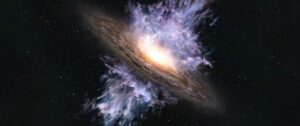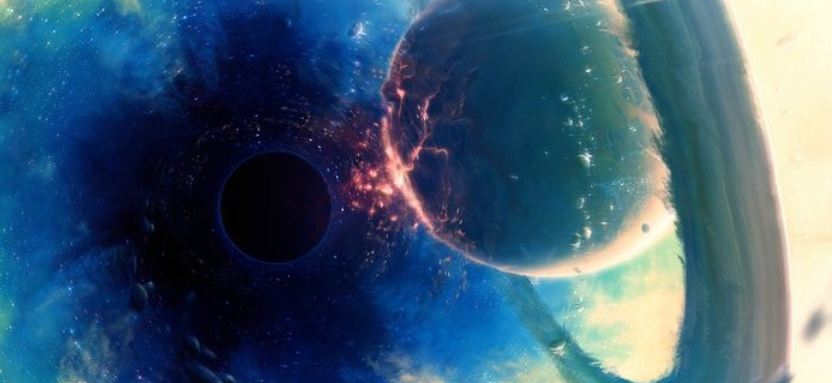The Universe witnesses some of the most impossible and curious space events, such as stars passing away, galaxy formation, or supermassive black hole creating chaos.
A recent discovery takes us 13.1 billion years ago when the Universe was just a baby, and some of the most incredible cosmic features loved to throw a tantrum, just because they could.
Here is what you need to know.
Massive Black Hole Storm Wrecked the Early Universe
A team of astronomers led by Takumi Izui of the National Astronomical Observatory of Japan (NAOJ) made quite the discovery, some billions of years ago, in the early Universe.
They used the ALMA (the Atacama Large Millimeter/submillimeter Array) to spot any movement in the gas course around galaxies with supermassive black holes in the early Universe. What they found is genuinely intriguing.
Galaxy J1243+0100

The team discovered galaxy J1243+0100, a few hundred million years right after the Big Bang. A further examination of the radio emission from the galaxy’s dust and the astronomers found an outflow rate of 447 times the Sun’s mass per year.
“Our observations support recent high-precision computer simulations which have predicted that coevolutionary relationships were in place even at about 13 billion years ago,” explained Izumi.
First of its kind
The discovery marks the earliest black hole to date, extending the record by 100 million years. It also indicated that feedback arose relatively early in the history of the Universe.
Back to the ALMA data, the team calculated the J1243+0100’s mass, and the results were impressive. It clocked in at 30 billion times the Sun’s mass, which means the black hole’s mass proportional at around 10 %.Â
That supports the idea that the coevolution of supermassive black holes and their host galaxies have occurred just a few hundred million years after the Big Bang.
Next, the team plans to examine a larger number of such cosmic objects to figure out whether or not the primordial coevolution of the recent discovery is actually a view of the general Universe at that time.












Leave a Reply